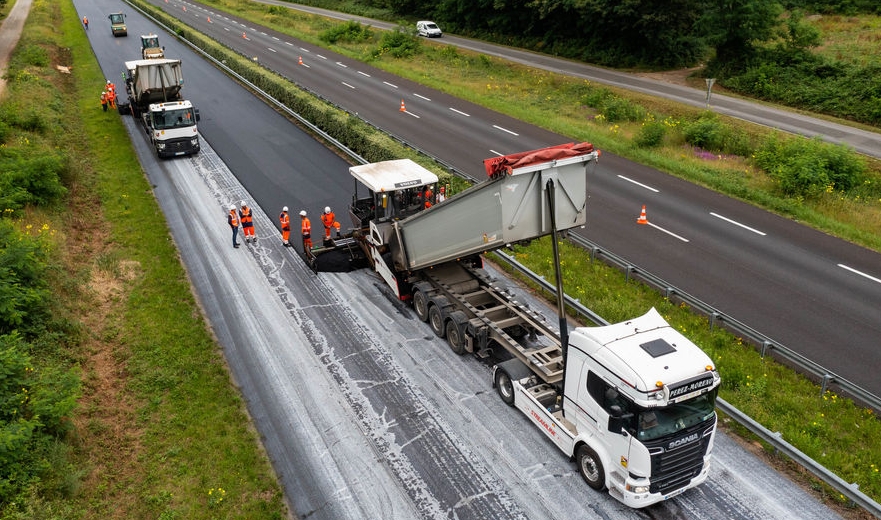Increasing the share of asphalt aggregates during track repair works requires the renewal of asphalt plants, both stationary and mobile.
For road professionals, the path of the circular economy follows the rhythm of the roads they maintain: very fast on motorways and urban axes, much slower on the secondary network. With an average rate of reintroduction of millings into new pavements of 19% in 2020, the recycling of asphalt aggregates is experiencing steady but very uneven growth.
“Many installations are already running with averages of 35 to 40%, and these rates commonly reach 70% on mobile factories installed near major construction sites,” notes Thierry de Sars, Development and Communication Director of the supplier Ermont, a subsidiary of the group. “Fayat specializes in asphalt plants. The room for improvement is in the old stock, with technological thresholds to pass.”
The ability to integrate asphalt aggregates directly depends on the materials used.
“Traditional plants are capable of integrating up to 30% asphalt aggregates, or even 50% subject to certain adaptations such as the installation of ventilation or smoke extraction systems,” recalls Alain Beghin, technical director of Spie malet batignolles.
To go further, the use of specific factories is essential. These facilities remain rare. Currently, only half of the plants in operation in France are able to implement a rate of 40% of asphalt aggregates, and only 2 to 3% to reach the 70% threshold.
The development of the fleet is therefore a first priority to increase the recycling potential. Manufacturers are trying to keep up with the movement, with an extensive range of solutions in recent years. Commissioned in 2017, Ermont’s TRX technology enabled Eurovia teams to build the first kilometer of 100% recycled motorway on the A10 – demonstrating the almost unlimited potential of asphalt aggregates. Since this demonstration site, the asphalt plant has remained mainly used with a rate of 70% recycled materials, indicates its builder.
“In 2020, we developed the TSX technology which allows us to obtain the same level of performance at lower costs. This optimized offer seems to us to be in line with the needs of the market”, specifies Thierry de Sars for Ermont.
Optimization of investment costs
The arrival of a new generation of equipment is therefore reshuffling the cards by optimizing investment costs for construction companies. At the head of Eurovia’s Equipment department, Didier Thévenard announces the commissioning by the end of 2023 of the group’s first factory in France to ensure an average rate of 60 to 70% – without disclosing its location or technology. used.
“The authorization to incorporate up to 10% of asphalt aggregates without changing the formulation was long enough to absorb the resource. From now on, the sector needs to structure itself: in the next decade, the production of asphalt mixes will become a circular economy profession, and no longer a simple production from virgin materials”, anticipates the manager.
But the issue is not only material. Reaching a rate of 70% of asphalt aggregates mobilizes skills to identify and characterize deposits.
“The main problem remains access to the resource, especially in the areas furthest from urban centres,” continues Didier Thévenard for Eurovia.
It is then necessary to be able to qualify the aggregates to define the most suitable formulations, in particular in the choice of additives which will help to remobilise the bitumens. It is therefore the entire organization upstream of production that must be reviewed, in particular for fixed installations that have to work with a greater variety of millings, and more complex logistics circuits than for major road construction sites.
Increasing the share of asphalt aggregates also means reassuring clients, who have long been cautious about the technical performance of recycled pavements. An important step was taken with the Mure program by demonstrating the relevance of 40% multi-recycling. Tomorrow, the highest rates will be between 70% and 90%. Quite sufficient to use the entire resource available.

